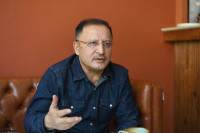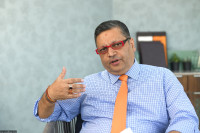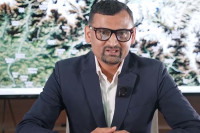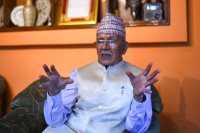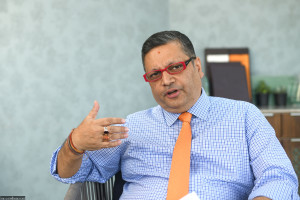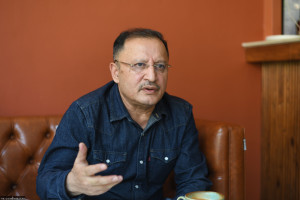Interviews
Only a meaningful partnership will yield tangible results
On Sunday, Prime Minister Sher Bahadur Deuba returned home from a state visit to India. Nepali Prime Ministers visiting India have had the challenge to be seen striking a balance between their government's ties with India and China.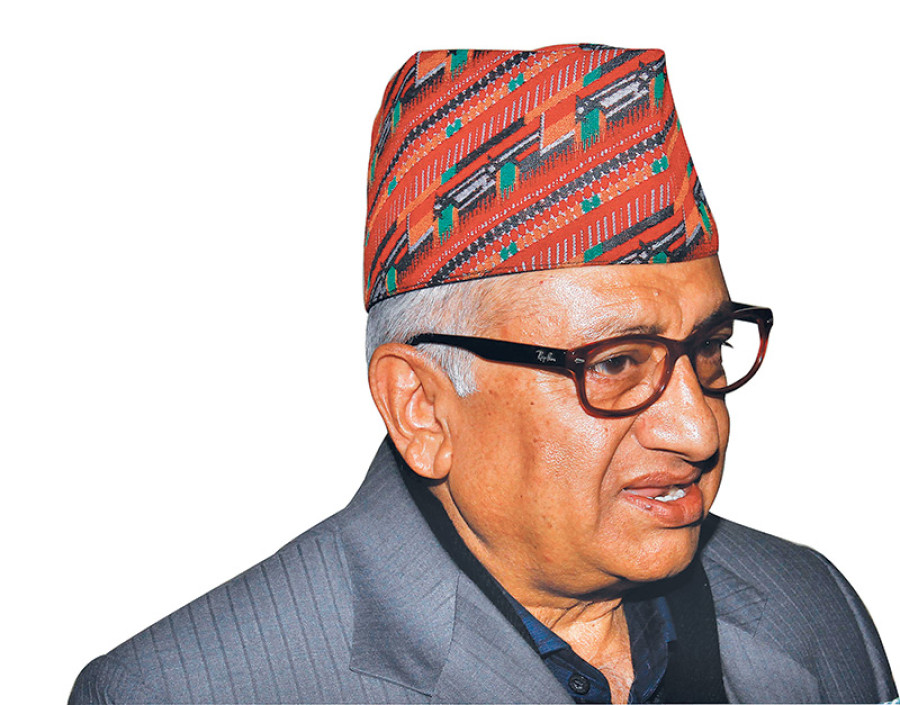
On Sunday, Prime Minister Sher Bahadur Deuba returned home from a state visit to India. Nepali Prime Ministers visiting India have had the challenge to be seen striking a balance between their government's ties with India and China.
The PM’s visit was closely followed, on how India has taken the political developments in Nepal; how Deuba put forward Nepal’s national interest while balancing the regional geo-political diplomacy.
Kamal Dev Bhattarai of the Post spoke with Nepal’s Ambassador to India Deep Kumar Upadhyay on the outcome of the visit and the inroads made towards establishing a stronger bilateral relationship.
What is your general take on the PM’s India visit?
This visit is a continuation of bilateral engagements at a senior political leadership level.
The visit has served as a great opportunity for the leadership to take stock of the broad range of agendas, provide necessary political guidance on several important matters, and chart out a direction for how we may seek to advance our relations in the future.
This visit was also an occasion for PM Deuba to renew his acquaintance with a range of Indian political leadership. The PM had fruitful and constructive conversations with the Indian leadership.
He met Prime Minister Narendra Modi on various platforms—in one-to-one meetings, and at the delegates’ level.
Discussions were focused, agenda based; and guided by the leaders’ commitment to see early, tangible results in various areas of cooperation.
What were the broader issues discussed during the PM’s visit?
The agendas have been elaborated under the clusters of cross border connectivity and infrastructure development, water resources and energy cooperation, defence and security cooperation, partnership for sustainable development, trade and investment linkages, cultural and people to people connection, and cooperation in international, regional and sub-regional forums.
Connectivity and infrastructure received extensive focus in conversations, as well as the outcome documents.
The focus was mainly on development partnerships; there is a growing realisation on both sides that only a meaningful, result oriented partnership between the two countries would yield tangible deliverables that people could ultimately cheer for.
In addition to early completion of the on-going cross-border railway, integrated check posts, and upgradation of roads and bridges linking major border points, emphasis has also been given on identifying and implementing new connectivity means.
The Motihari-Amlekhgunj petroleum pipeline, which was agreed upon before, will be implemented expeditiously. A bilateral mechanism will complete required homework for the development of Liquefied Petroleum Gas (LPG) and natural gas pipelines.
As suggested by a joint technical report, new cross border transmission lines will be developed in sync with the completion schedule of on-going, and large, hydropower
projects.
Which were other important agendas? We believe that there was also focus on cooperation in the hydropower sector.
The two new transmission lines the both PMs inaugurated will enable Nepal to import extra electricity needed for the upcoming dry season. They have given clear direction to take required steps to facilitate a timely start to the work on Arun III and Upper Karnali
projects. The Nepal government has just made an important decision on the pending issue of forestland for Arun III. This matter has now been cleared and work on the project will begin soon.
PM Deuba has invited PM Modi to pay a visit to Nepal and, during the visit, the foundation stone could jointly be laid for this vital project, among other things. PM Modi has responded positively to the invitation.
The Pancheshwar Multi-purpose Project initiative had received a breakthrough under the Mahakali Treaty in 1996 when Deuba was the PM. Is there any progress on finalising DPR of the project?
At present, efforts are being made to finalise the Detailed Project Report (DPR), and both the PMs have set a one month deadline for its completion. For me, such a high level of commitment from the top layer of leadership provides great assurance.
Once the DPR is ready, this will pave the way for the implementation of work on the ground. The visit has, therefore, marked a visible progress in the Pancheshwar project.
The Indian side has also given positive indications towards the long pending issues of a link canal and a link road between Tanakpur and Mahendranagar.
What are major bottlenecks in Nepal-India relations, particularly in terms of trade?
Bilateral trade is growing every year, but the balance of trade is not in favour of Nepal.
There is a concern on the Nepali side that the bulging trade deficits not sustainable and measures should be identified and implemented to help Nepal expand its export base.
This concern has been well reflected in the outcome document. Infrastructure deficiencies, trade restricting factors like technical barriers, quarantine, lengthy custom procedures, et cetera have been pointed out as key bottlenecks.
Both sides have directed the related intergovernmental commerce mechanism to find ways to address these issues.
They have also agreed for early conclusion on some transit related letters of exchange, upgradation of new border trade and transit points, and channelization of more investment from India.
What about the discussion between the two PMs on cooperation in new areas?
The offer from the Indian side in this regard was that India is ready to support Nepal in its pursuit of development and prosperity.
Our emphasis this time was on large scale deliverables and for that, we shared the details of some of our priority projects, where assistance from the Government of India would be important and desirable.
The Indian side responded positively and a number of large scale development projects have been enlisted in the outcome document. The types of assistance could vary; grant, concessional loan, public-private partnership or any other viable modality could be used.
The indicative list of projects has at least provided us a general idea of where the valuable assistance from the Government of India will mainly be channelized in the future.




 18.12°C Kathmandu
18.12°C Kathmandu